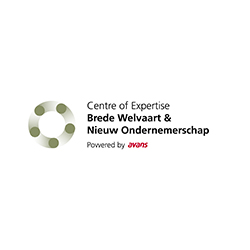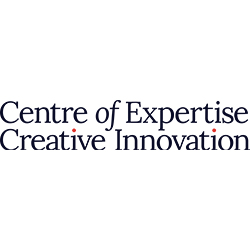In 1896 Svante Arhenius discovered that fossil fuels are a source of carbon dioxide. In 1965 the US Presidents science advisory panel reported that pollution is a major threat to society. In the 1970s atmospheric scientists Manabe, Wetherald and Sawyer confirmed that human activities are contributing factors to climate change. Richard Maxwell and Toby Miller explored the environmental impact of media technology in 2012. Kääpä explored sustainability in media in 2018, yet in 2022 sustainability in Film, TV and Media is still in its infancy, while other sectors are taking strong measures to reduce their carbon footprint. This report synthesis Elkington’s’ triple bottom line with Porters’ value chain in Film, TV, and media production as framework to teach sustainability. Research highlights the importance of Small Medium Enterprises (SMEs) in the sector and underscores Green Production strategies that reduce the carbon footprint. Research reveals that the sector has the unique potential to change the way audiences perceive sustainability using Green Content strategies and highlights the sustainability problem in distribution. Results suggest that educational institutions in Film, TV, and Media must do more to integrate sustainability into their curricula to unleash the full potential beyond sector boundaries.
LINK
Full text via link. Jonge moeders kunnen hulp goed gebruiken. Maar in het tv-programma Vier Handen op een Buik verkopen ze hun sores en privacy aan BNNVARA
LINK
This research paper presents a Screening Room tool, inspired from the Film and TV industry, that is then applied to the game industry. The work involved the creation and development of several in-game prototypes of a Screening Room tool within the game engine Unity 5. The iterative development involved usability testing and benchmarking against an example of current game development quality assurance processes that use BugZilla. The prototype resulting from the third iteration was then tested within a commercial games company CodeGlue and it was found that an overall time saving of approximately 500% was made whilst usability being arguably better for bug finding staff whilst similar to more complex for the bug fixing staff.
DOCUMENT
Patiëntdata uit vragenlijsten, fysieke testen en ‘wearables’ hebben veel potentie om fysiotherapie-behandelingen te personaliseren (zogeheten ‘datagedragen’ zorg) en gedeelde besluitvorming tussen fysiotherapeut en patiënt te faciliteren. Hiermee kan fysiotherapie mogelijk doelmatiger en effectiever worden. Veel fysiotherapeuten en hun patiënten zien echter nauwelijks meerwaarde in het verzamelen van patiëntdata, maar vooral toegenomen administratieve last. In de bestaande landelijke databases krijgen fysiotherapeuten en hun patiënten de door hen zelf verzamelde patiëntdata via een online dashboard weliswaar teruggekoppeld, maar op een weinig betekenisvolle manier doordat het dashboard primair gericht is op wensen van externe partijen (zoals zorgverzekeraars). Door gebruik te maken van technologische innovaties zoals gepersonaliseerde datavisualisaties op basis van geavanceerde data science analyses kunnen patiëntdata betekenisvoller teruggekoppeld en ingezet worden. Wij zetten technologie dus in om ‘datagedragen’, gepersonaliseerde zorg, in dit geval binnen de fysiotherapie, een stap dichterbij te brengen. De kennis opgedaan in de project is tevens relevant voor andere zorgberoepen. In dit KIEM-project worden eerst wensen van eindgebruikers, bestaande succesvolle datavisualisaties en de hiervoor vereiste data science analyses geïnventariseerd (werkpakket 1: inventarisatie). Op basis hiervan worden meerdere prototypes van inzichtelijke datavisualisaties ontwikkeld (bijvoorbeeld visualisatie van patiëntscores in vergelijking met (beoogde) normscores, of van voorspelling van verwacht herstel op basis van data van vergelijkbare eerdere patiënten). Middels focusgroepinterviews met fysiotherapeuten en patiënten worden hieruit de meest kansrijke (maximaal 5) prototypes geselecteerd. Voor deze geselecteerde prototypes worden vervolgens de vereiste data-analyses ontwikkeld die de datavisualisaties op de dashboards van de landelijke databases mogelijk maken (werkpakket 2: prototypes en data-analyses). In kleine pilots worden deze datavisualisaties door eindgebruikers toegepast in de praktijk om te bepalen of ze daadwerkelijk aan hun wensen voldoen (werkpakket 3: pilots). Uit dit 1-jarige project kan een groot vervolgonderzoek ‘ontkiemen’ naar het effect van betekenisvolle datavisualisaties op de uitkomsten van zorg.
Middels een RAAK-impuls aanvraag wordt beoogd de vertraging van het RAAK-mkb project Praktische Predictie t.g.v. corona in te halen. In het project Praktische Predictie wordt een prototype app ontwikkeld waarmee fysiotherapeuten in een vroeg stadium het chronisch worden van lage rugpijn kunnen voorspellen. Om chronische rugpijn te voorkomen is het belangrijk om in een vroeg stadium de kans hierop in te schatten door psychosociale en mogelijk andere risicofactoren op chronische pijnklachten te herkennen en hierop te interveniëren. Fysiotherapeuten zijn met deze vraag naar het lectoraat Werkzame factoren in Fysiotherapie en Paramedisch Handelen van de Hogeschool van Arnhem en Nijmegen gegaan en dit heeft aanleiding gegeven een onderzoek op te zetten waarin een dergelijke methodiek ontwikkeld wordt. De voorgestelde methodiek betreft een Clinical Decision Support Tool waarmee een geïndividualiseerde kans op chronische rugpijn kan worden bepaald gekoppeld aan een behandeladvies conform de lage rugpijn richtlijn. Hiervoor is eerst geïnventariseerd welke methoden fysiotherapeuten reeds gebruiken en welke in de literatuur worden genoemd. Op basis hiervan is een keuze gemaakt ten aanzien van data die digitaal verzameld worden in minimaal 16 fysiotherapiepraktijken waarbij patiënten gedurende 12 weken gevolgd worden. Met de verzamelde data worden met machine learning algoritmes ontwikkeld voor het berekenen van de kans op chroniciteit. De algoritmes worden ingebouwd in de Clinical Decision Support Tool: een gebruiksvriendelijke prototype app. Bij het ontwikkelen van de tool worden eindgebruikers (fysiotherapeuten en patiënten) intensief betrokken. Op deze manier wordt gegarandeerd dat de tool aansluit bij de wensen en behoeften van de doelgroep. De tool berekent de kans op chroniciteit en geeft een behandeladvies. Daarnaast kan de tool gebruikt worden om patiënten te informeren en te betrekken bij de besluitvorming. Vanwege de coronacrisis is er een aanzienlijke vertraging in de patiënten-instroom (doel n= 300) ontstaan die we met ondersteuning van een RAAK-impuls subsidie willen inlopen.
Wetenschappers gebruiken bioorthogonale klikreacties tussen trans-cyclooctenen (TCOs) en tetrazines (Tz) om geheel nieuwe geneesmiddelen te ontwikkelen waarmee heel gericht cruciale biologische doelmoleculen kunnen worden geraakt, zodat ziektes op een veel selectievere manier kunnen worden behandeld. Recentelijk heeft de Radboud Universiteit een nieuw TCO-derivaat ontwikkeld en geoctrooieerd dat beschikt over twee orthogonale handvatten, goede stabiliteit, een snelle klik-kinetiek en een biocompatibele “click-to-release” functionaliteit. Bovendien kan deze TCO in een efficiënte synthese met hoge zuiverheid geproduceerd worden in tegenstelling tot vergelijkbare gepubliceerde stoffen. Binnen dit KIEM project zullen ‘ready-to-use’ TCO-producten ontwikkeld worden, gebaseerd op dit nieuwe TCO-derivaat. Dit is belangrijk om de drempel te verlagen voor onderzoekers om deze nieuwe technologie te benutten in hun toepassingen en versnelt daarmee de ontwikkeling van “slimme” geneesmiddelen of materialen. De werkzaamheden in dit project zullen bestaan uit literatuuronderzoek, synthetisch ontwerp van TCO-derivaten, chemische synthese, onderzoek naar de eigenschappen van de stoffen en contact leggen met potentiele gebruikers. De beoogde projectresultaten zijn chemische methoden om geactiveerde TCOs te synthetiseren, 5–10 geactiveerde eindproducten, inzicht in de chemie van TCOs, inzicht in de kinetiek en stabiliteit van de nieuwe TCOs en nieuwe samenwerkingen. In dit project wordt samengewerkt tussen de Radboud Universiteit en het biotechnologiebedrijf Synvenio. Binnen de synthetisch organische chemie afdeling van de Radboud Universiteit is de eerdergenoemde nieuwe TCO ontwikkeld. Synvenio is een jong biotechnologiebedrijf dat bioactieve stoffen beschikbaar maakt voor biochemisch- en biomedische onderzoekers. Het team bestaat uit chemici met veel affiniteit met biochemie, waaronder een van de uitvinders van de nieuwe TCO.
Centre of Expertise, onderdeel van Avans Hogeschool

Centre of Expertise, onderdeel van Amsterdamse Hogeschool voor de Kunsten, Hogeschool van Amsterdam, Hogeschool Inholland, +1
